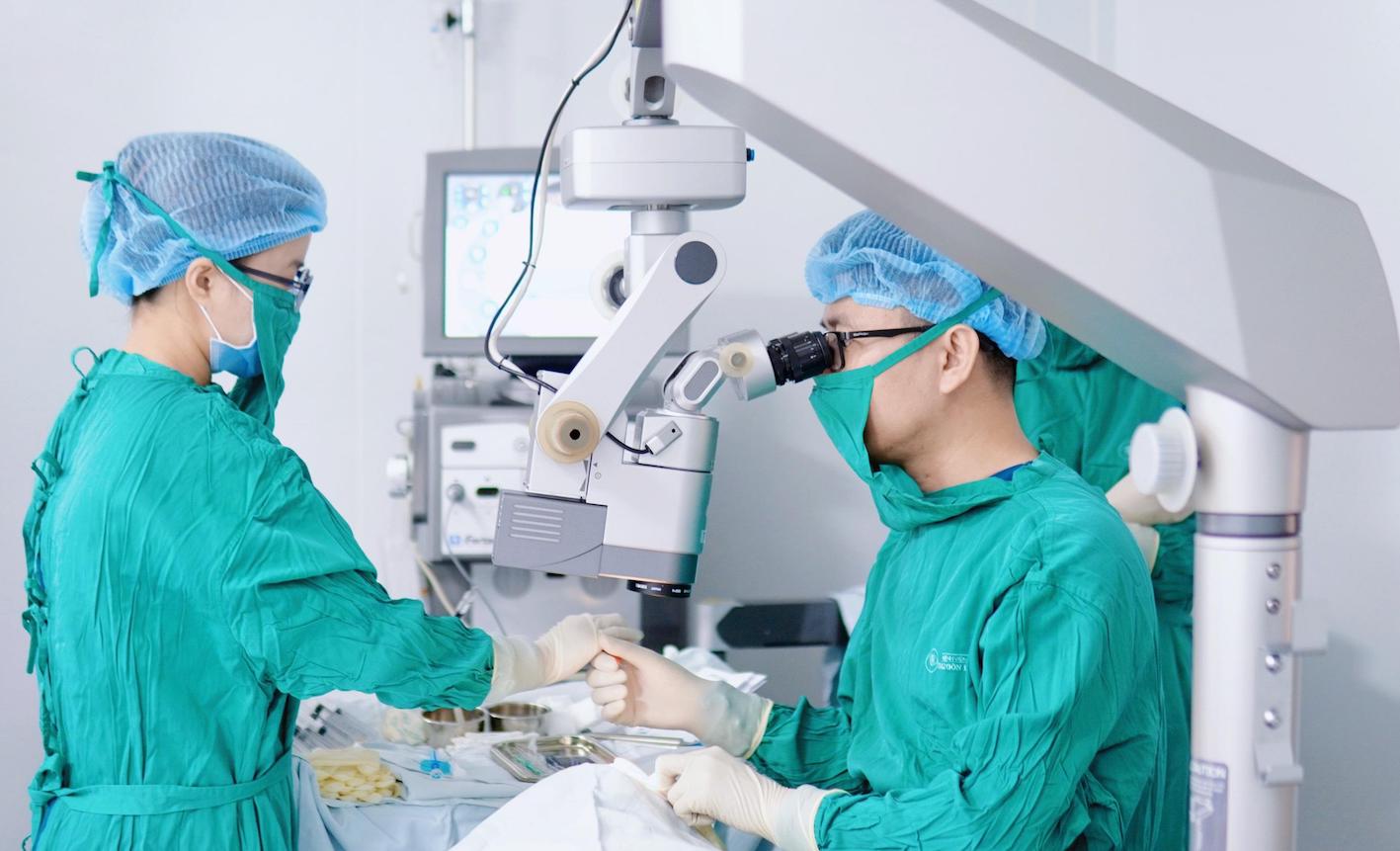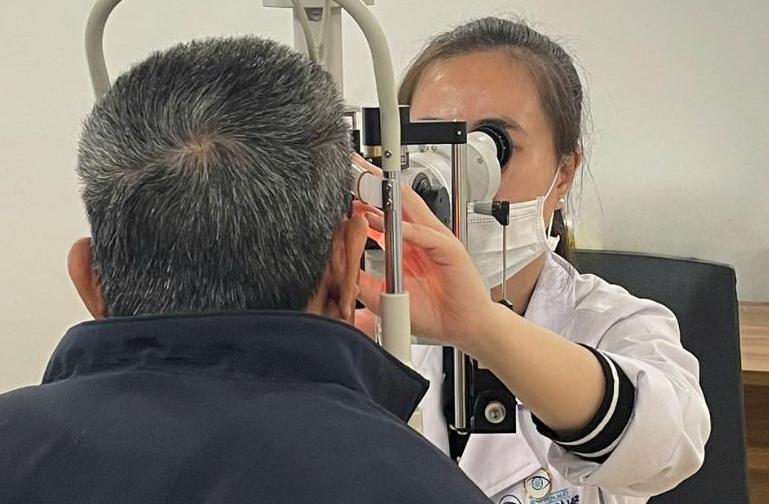On 17/9, Doctor Tran Thi Khanh Linh, deputy director of Saigon Da Lat Eye Hospital, reported the patient's intraocular pressure (IOP) was at an alarming 29 mmHg, significantly higher than the normal range of 12-20 mmHg. This caused pain, blurred vision, and light sensitivity in both eyes.
The cataracts further complicated the diagnosis and treatment by obstructing examination of the optic nerve and impeding the flow of fluid, thereby increasing IOP. The combination of cataracts and glaucoma made the condition complex, challenging to diagnose, monitor, and treat surgically.
Doctors decided on a dual surgical approach. They performed phacoemulsification to remove the cataracts and implanted a Paul glaucoma implant (PGI), a drainage device that helps regulate IOP, protecting the optic nerve and preserving vision. The surgery aimed to prevent blindness and relieve the patient's pain and discomfort.
Dr. Tran Ba Kien, the lead surgeon, explained that performing only cataract surgery would not sufficiently lower IOP, allowing glaucoma to progress and potentially cause further optic nerve damage. Conversely, solely implanting the PGI would leave the cataracts obstructing observation and assessment of glaucoma-related optic nerve damage.
 |
Doctors performing the surgery on the patient. Photo: Hospital provided |
Doctors performing the surgery on the patient. Photo: Hospital provided
The combined procedure took approximately 30 minutes (5 minutes for phacoemulsification and 25 minutes for PGI implantation). Separate procedures would have required more preparation time and prolonged the patient's discomfort. Multiple surgeries also negatively impact quality of life and increase patient anxiety.
Post-surgery, the patient's IOP stabilized at 16 mmHg. The patient no longer needs IOP-lowering medication and is free from pain.
 |
The patient during a post-operative eye exam. Photo: Hospital provided |
The patient during a post-operative eye exam. Photo: Hospital provided
According to Dr. Linh, the co-occurrence of cataracts and glaucoma is not uncommon, especially in older adults. The presence of both conditions makes monitoring difficult and surgery more challenging.
Regular eye exams are recommended for older adults to detect eye conditions early. Timely treatment helps maintain vision and limits severe complications. Discontinuing medication or delaying recommended surgery can accelerate disease progression, making it harder to control and potentially leading to blindness.
Le Phuong












